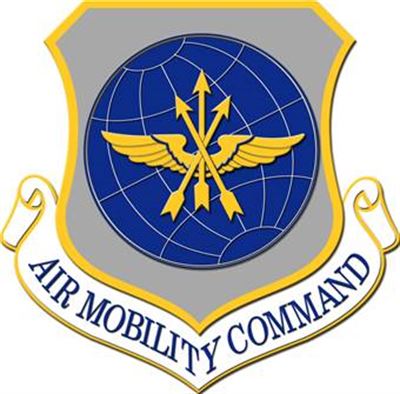Stretched Air Mobility Command Needs Better Comms to Meet Global Mission
The U.S. Air Force’s Air Mobility Command (AMC) is stretched thin across the world. Constant operations and disaster relief flights have created a situation in which the AMC flew twice as many hours as optimal from 2012 – 2016.
AMC airmen are deployed in 77 locations around the world. Aircraft take off every 2.8 minutes to support the mission, and every five minutes a jet requires re-fueling over the Middle East. Many of the tankers carrying this load are over 50 years old, and the service is forced to meet these heightened requirements with fewer airmen than it had in 1990.
“’USAF is “too small for what the nation expects of it,’ Air Force Secretary nominee Heather A. Wilson told lawmakers at her confirmation hearing in March. ‘I think we sometimes take for granted American dominance in air and space power.’”
Command and control (C2) challenges add to the AMC’s operational burden. According to a recent article in Over the Horizon, the AMC lacks secure C2 solutions for Beyond Line of Sight (BLOS) communications on the vast majority of its supply flights (the KC-135 reference below is the Boeing Stratotanker, a workhorse aircraft for the AMC that first entered service in 1957):
“As of 2006, AMC sought to deliver a capability called Real-Time Information into the Cockpit (RTIC) to enable ‘[Mobility Air Force] aircrews real-time, global, secure voice and data (capable of machine-to-machine and human interface) command and control (C2) and situational/threat awareness…’ Unfortunately, the USAF has not solved the problem nor installed a secure BLOS C4I system into even a fraction of the 1,100 mobility aircraft executing global logistics, evidenced by the FY2015 Air National Guard Resolutions Package, which requested, ‘[a]dditional funding for KC-135 RTIC’ and ‘[a]dditional funding for C-17 RTIC.’ The FY2017 package again requests an additional $170M for KC-135 RTIC.”
The article goes on to say that “the lack of airborne global secure C4I coupled with a strong reliance on large numbers of civilian and foreign contractors to enable the DOD’s global logistics capability presents a critical vulnerability to any future US military operation.”
Allowing AMC flights to access the Wideband Global SATCOM (WGS) network might seem like a solution for BLOS communications. But WGS bandwidth is in short supply due to constantly escalating in-theatre C4ISR requirements, and AMC in-flight comm needs historically have not been prioritized.
New high-throughput satellite (HTS) systems have ushered in a new level of SATCOM performance. For example, current WGS satellites leverage technology over a decade old to deliver approximately 3 Gbps of throughput. Intelsat EpicNG satellites can deliver 10 times that capability. In addition, the AMC could take advantage of increased HTS performance, efficiency and bandwidth without investing in new ground equipment and infrastructure. An open architecture using either C- and Ku-band frequencies enables government users to affordably and efficiently scale their communication networks while leveraging their existing investments.
HTS is also a leap forward when it comes to resiliency. Intelsat EpicNG introduces a more “hardened” level of commercial SATCOM. Interference mitigation capabilities, like on-board power monitoring and notch filtering of interferers/unauthorized users, are greatly enhanced with EpicNG satellites. These capabilities along with monitoring, re-routing, geo-location and identification of interferers means EpicNG SATCOM is better protected for deployment in contested environments.
Additionally, waveforms, such as Protected Tactical Waveform (PTW), can provide cost effective, protected communications over both government and commercial satellites in multiple frequency bands. PTW has been validated on both Intelsat wide beam and Intelsat EpicNG satellites.
There are additional security measures employed by Intelsat General that make commercial SATCOM an effective BLOS solution for the AMC. Intelsat and IGC’s hardened network infrastructure meets and often exceeds DoD Directives/Instructions and NIST cybersecurity recommendations, and it is the only global satellite operator audited by third-party evaluators for security compliance.
The flexibility of this new level of commercial SATCOM could also serve the Air Force well for an eventual move towards managed services. As the DoD faces increasing bandwidth demands, purchasing services rather than simply bandwidth makes more and more sense. IntelsatOne Flex is a customizable service that combines Intelsat’s new EpicNG platform, existing Ku-band fleet, worldwide ground network and optimized iDirect Velocity terminals into a powerful, unified ecosystem. IntelsatOne Flex enables customers to flexibly allocate bandwidth to meet surges in demand levels or rapidly changing geographic requirements.
No one would dispute how indispensable SATCOM is for guaranteeing situational awareness in theater. The ability of the DoD to deploy resources – military or disaster recovery related – anywhere at a moment’s notice is in large part what makes the U.S. the world’s preeminent power. However, that ability can’t be sustained forever with decades old technology.
It’s time to give the AMC the latest technology with which to do its job. And better in-flight communications is a good place to start.






















